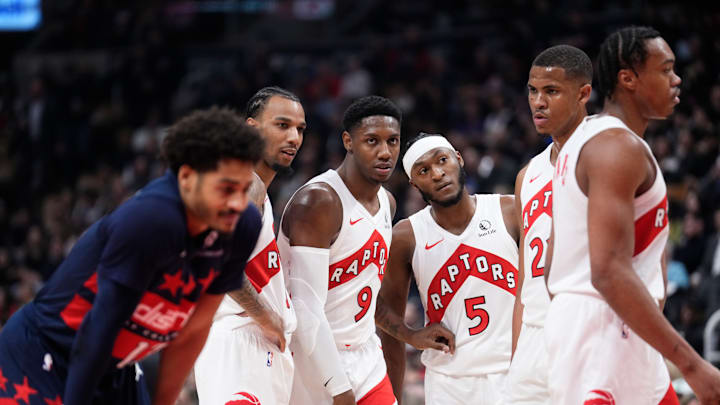The Toronto Raptors have received widespread criticism for what many believe to be a flawed approach to team-building. Toronto has invested heavily in size and versatility, adding wings and forwards en masse, but some fear that they've lost the opportunity to create cohesion in the process.
Thankfully, the Raptors' seemingly radical approach to roster construction is justified by the success the Houston Rockets have experienced under similar circumstances.
Even before it landed Kevin Durant, Houston had embraced a surprising strategy for escaping the depths of despair. It paid above market value for NBA champion point guard Fred VanVleet, invested in a veteran wing in Dillon Brooks, and prioritized size and versatility from thereon out—ultimately resulting in 52 wins and the No. 2 seed in the Western Conference.
Houston will now enter the 2025-26 season with a surplus of forwards on its roster, including Kevin Durant, Tari Eason, Dorian Finney-Smith, Jabari Smith Jr., and Amen Thompson.
The obvious concern is that the Rockets will struggle to find playing time for five different starting-caliber forwards. It's an especially alarming possibility when one considers that both Durant and Thompson are star-caliber talents who will command significant minutes on their own.
Much as Houston has found a way to navigate the challenges of a forward-heavy rotation, however, Toronto has an opportunity to do the same.
Raptors can follow Rockets' example and emphasize wings and forwards
Much like Houston, Toronto has a surplus of talented wings and forwards to whom only so many minutes can be provided. That includes projected starters Scottie Barnes, RJ Barrett, and Brandon Ingram, as well as up-and-comers Ochai Agbaji, Gradey Dick, Collin Murray-Boyles, and Ja'Kobe Walter.
With Immanuel Quickley and Jamal Shead at point guard, and Jakob Poeltl at center, opportunities for playing time could prove even more difficult to come by.
Thankfully, Houston proved in 2024-25 that an ideal balance can be struck while operating under similar circumstances. VanVleet played 35.2 minutes per game and center Alperen Sengun was on the court for another 31.5, yet Houston still managed to balance its rotation.
Houston and Toronto's rosters are by no means carbon copies of one another, but there are enough similarities that a commitment to defense could yield intriguing results in Toronto.
Barnes is a star-caliber two-way player who, in a loose analogy, acts as the Thompson in the Raptors' rotation. Quickley has a similar skill set to VanVleet, including his commitment as a team defender and his ability to stretch the floor—all the while offering more efficiency within the three-point line.
Poeltl isn't the playmaker that Sengun has proven to be, but he provides value in his own way as a defender and general interior anchor.
Collin Murray-Boyles can tie the vision together for the Raptors
From there, it's a matter of figuring out if Barrett and Ingram can learn to coexist in the way the Rockets' core players have. Agbaji and Dick are adaptable due to their proficiency as shooters, Walter is flush with two-way potential, and Murray-Boyles is the epitome of versatility.
The question is: Can Murray-Boyles emerge as a player who can offer quality minutes as a backup center, thus permitting Toronto's deep rotation to distribute minutes in the even manner it needs to?
Murray-Boyles would've been a prototypical power forward at another point in time, and that may ultimately prove to be his best position given the resurgence of the star-caliber center. The ambitious hope, however, appears to be that he can operate in a Draymond Green role long-term.
If that comes to fruition, then the Raptors could run a fascinating small-ball lineup with Quickley, Barrett, Ingram, Barnes, and Murray-Boyles.
That group would lack size down low, but would possess an overwhelming combination of height and versatility in other regards. It could bully teams that aren't necessarily equipped with offensively-inclined centers, push the pace against just about anyone, and bank on internal progression for spacing.
It's by no means a foolproof strategy, but what the Raptors are building is at least somewhat justified by the success that the Rockets experienced in 2025-26.
